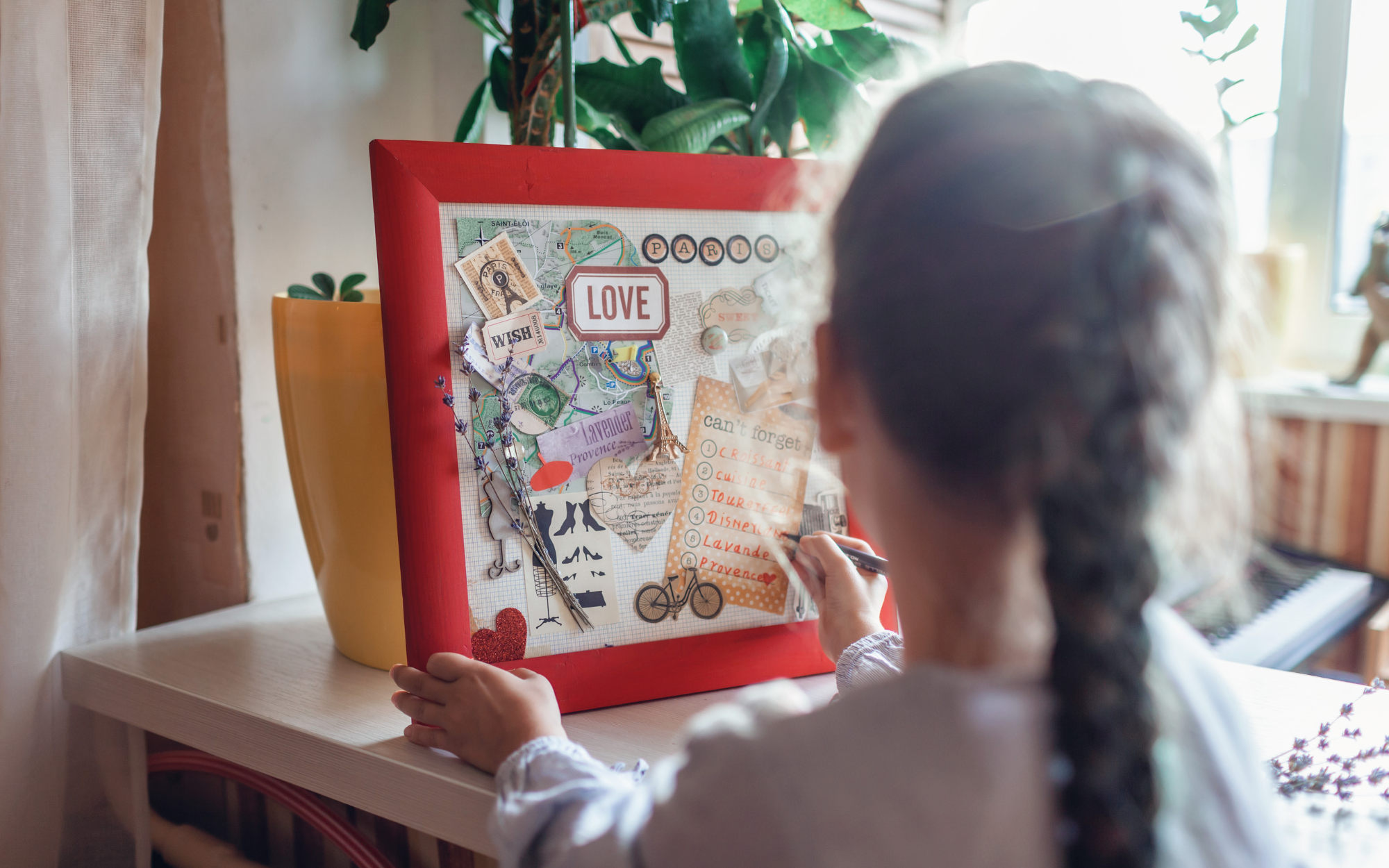As the new year approaches, many people take time to reflect on their goals and set resolutions. One creative way to do this is through a vision board. For children with autism, this craft offers a sensory-rich experience that not only sparks creativity but also provides opportunities for self-expression and goal setting. Using the principles of ABA therapy (Applied Behavior Analysis) and incorporating ABA services or autism behavior support, this project can become a valuable tool for development.
Why Make a Vision Board?
Creating a vision board helps children with autism articulate their wishes or goals for the upcoming year. It involves selecting images or words that represent their aspirations and using visual and tactile methods to build their unique boards. This process aligns with the visual and sensory-based techniques often used in ABA therapy to engage children and enhance learning.
Benefits of Making a Vision Board:
-
Sensory Engagement:
- Vision boards encourage children to explore textures, colors, and visuals. The tactile action of cutting and gluing images from magazines can help with fine motor skills, while the act of focusing on images that hold meaning promotes visual processing.
-
Self-Expression:
- They offer a unique opportunity for children with autism to express their ideas and emotions. Whether they choose images of places they want to visit, activities they want to try, or personal traits they want to work on, the process encourages self-awareness and creativity. Autism behavior support can help facilitate discussions during this activity, guiding children to reflect on their goals and fostering a sense of accomplishment.
-
Goal Setting:
- Creating a vision board helps children practice goal setting in a fun and engaging way. When they choose images or words related to their goals for the new year, they are learning to visualize success. For children in ABA services, setting small, manageable goals is a key component of therapy, and vision boards serve as a great visual aid to reinforce these goals.
-
Building Social Skills:
- The vision board activity can be a great social experience, especially if done in a group setting. Children can collaborate, share ideas, and even trade images from magazines. This fosters social interaction and communication, important areas that ABA therapy often targets.
Materials Needed:
- Poster board: A sturdy base for the vision board.
- Magazines: These will provide images and words for the children to cut out and use. Look for magazines that feature a variety of topics such as nature, travel, hobbies, and personal achievements.
- Glue: To stick the images and words to the poster board.
- Scissors: For cutting out images and words.
- Stickers (optional): Fun decorative stickers can be added to enhance the board and make it more personalized.
How to Make a New Year’s Resolution Vision Board:
- Prepare the Materials: Start by gathering the materials you’ll need: poster board, magazines, scissors, glue, and stickers.
- Select Themes: Encourage the child to think about what they want for the new year. They may want to set goals related to personal growth, learning new skills, or exploring fun activities. It could also be helpful to break down goals into smaller steps.
- Find Images and Words: Help children browse through magazines to find images or words that represent their goals or wishes. For example, a child who wants to travel may cut out pictures of places, while one who loves art may look for images of art supplies or finished artwork. As they cut out their chosen images, they’ll engage in both tactile and visual experiences.
- Arrange and Glue the Images: Once the child has selected their images, guide them in arranging the images on the poster board. Encourage creativity by mixing images, words, and stickers to make the board colorful and visually appealing. When they’re happy with the layout, help them glue everything in place.
- Add Personal Touches: Let the child add their own drawings, words, or stickers to personalize their vision board further. This is a great opportunity for children to practice fine motor skills and develop a sense of ownership over their creations.
- Display the Finished Vision Board: Once the vision board is complete, display it in a place where the child can see it every day. This will serve as a reminder of their goals and help them stay focused as the year progresses.
How Vision Boards Support ABA Therapy
Creating a vision board can complement ABA therapy by encouraging children to practice skills such as focus, communication, and self-awareness. The craft involves clear, achievable steps that can be broken down and worked on through ABA techniques. For example, when discussing each image or goal on the vision board, therapists can work with the child to practice verbal communication, reinforce positive behavior, and set realistic expectations.
Making a New Year’s Resolution vision board is a wonderful sensory craft for children with autism. It engages multiple senses, encourages creativity, and helps children set and visualize their goals. Whether through ABA therapy, autism behavior support, or ABA services, this activity can foster growth and development while giving children a sense of accomplishment and pride as they reflect on their aspirations for the new year.
Celebrate the New Year with fun sensory crafts at our Blog page like making a DIY New Year’s Noisemakers and Glitter Sensory Bottles.


